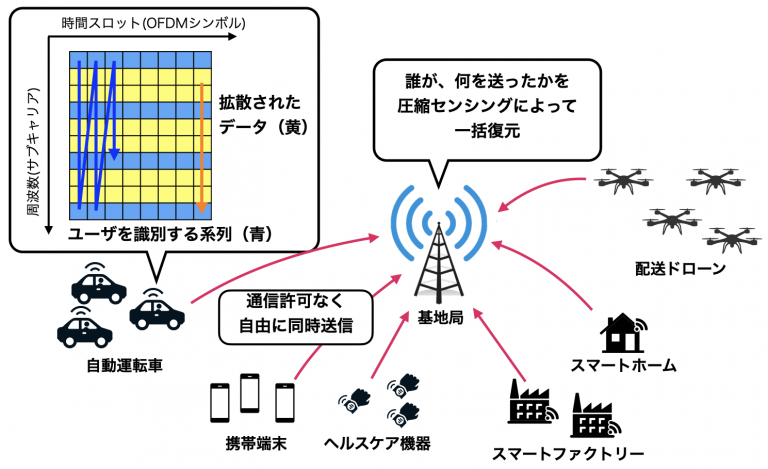

Japan 6G: The University of Electro-Communications epoch-making algorithm development: Cell-free MIMO system
University of Electro-Communications: Advanced Wireless Communication Research Center
Koji Ishibashi Research Group:
We have developed an “algorithm that enables maximum communication without crosstalk even in an environment where communication radio waves are extremely crosstalk.”
Beyond 5G (6G):
Cell-free MIMO system listed in next-generation 6G
The Cell-free MIMO system is a communication that uses a large number of transmit and receive antennas.
The frequency utilization rate is 7 times that of the conventional method.
Completed patent application, aiming for standardization in 6G with companies.
Cell-free MIMO system:
In a self-free MIMO system, the antennas are arranged so closely that the radio waves interfere with each other.
Multiple antennas are connected by optical fiber and controlled by a central control station.
Smartphones, self-driving vehicles, robots, etc.
Towards the antenna A signal is sent from the optimal antenna so that it does not interfere with other communications.
This non-interfering condition is solved by matrix calculation.
Multilinear generalized singular value decomposition method:
In order to connect various terminals, the calculation handles multiple matrices of different sizes.
Therefore, the matrix is decomposed by a calculation method called multi-linear generalized singular value decomposition.
This singular value decomposition has been upgraded to a method suitable for high-speed communication.
Verification by simulation:
While reducing the calculation load
Compare the frequency utilization rate with the conventional method
It could be increased up to 7 times.
Prioritizing fairness, “when maximizing the communication speed of the user with the slowest communication speed” was also superior to the conventional method.
Research on Beyond 5G is proceeding at the National Institute of Information and Communications Technology.
New switch
Work | Distributed Wireless Systems Laboratory
Distributed wireless systems laboratory (D-WiSE)
is aiming to realize ultra-reliable and ultra-long-life communications systems that “never run out of battery and never go out of range,” which are completely different from conventional wireless communications systems.
We are now working on several projects
on beyond 5G/6G
including grant-free access and robust beamforming,
physical-layer security for the post-quantum era, ultra-low power communications, cell-free network, energy harvesting, and more.